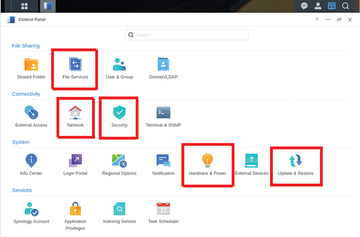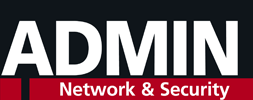
Lead Image © Vladimir Nenov, 123RF.com
Storage across the network with iSCSI and Synology DiskStation Manager
Across the Block
The Internet small computer systems interface (iSCSI) [1] is a block-level [2] interfacing protocol used in conjunction with any network-attached storage (NAS) unit. As the name implies, iSCSI uses the locally focused SCSI block storage protocol and adds the ability to reference resources across the network.
By issuing SCSI commands over the TCP/IP suite, iSCSI makes it possible to integrate a remote mountpoint located anywhere on the Internet, including in another time zone. The iSCSI protocol essentially lets you treat remote storage as if it were local. In other words, you can set up a storage area network (SAN) with existing resources – and without a lot of expensive equipment.
The iSCSI bus is a good fit for heavy read and write scenarios (e.g., high-availability (HA) environments). Even though iSCSI naturally inherits the flaws of TCP/IP, you can enhance the transmission capacity by adding additional network interface cards (NICs).
My Favorite Recipe
For an example of iSCSI in the real world, I will show you how to integrate a Synology DiskStation storage device with a Debian v12 "bookworm" environment. I assume you have already purchased drives and a NAS enclosure, and you already have a working Debian client system. Although this article is focused on Synology, the steps for configuring iSCSI in other environments are similar. My newly assembled test environment will be, on the server side,
- 1x Synology DiskStation DS414j
- 4x WDC WD201KRYZ
and on the client side:
- 1x Debian bookworm on a custom built system
Synology uses the proprietary DiskStation Manager (DSM) interface, which I will refer to in this article; other vendors offer similar GUI configuration tools.
Getting Started
Regardless of whether your server is proprietary or self-built, you will want to tackle the following tasks before proceeding:
- Always run the latest and greatest of everything available on both the client and the server side
- Communicate only on the iSCSI port from the server side
- Enable firewall and possibly set a specific allow/block list on both the client and the server side
- Do not allow drives to fall into sleep mode on the server side
- Make the server as quiet as possible
Therefore, the first thing you'll want to do is harden your NAS device by applying the latest system update with the Update & Restore option group in the Control Panel. After the device spends some time patching and restarts, you should begin to strip all unwanted features.
So that only the iSCSI sockets reach the data of your device, you need to deactivate everything that has to do with file sharing under File Services located under the Control panel (Figure 1). From there, uncheck all entries located under any of the available tabs at the top (in my case, these are SMB , AFP , NFS , FTP , rsync , and Advanced ).
 Figure 1: The Synology Control Panel bunded with there DiskStation devices are packed with relevant and modern features, but for the sake of this article, I only use the five groups marked in red.
Figure 1: The Synology Control Panel bunded with there DiskStation devices are packed with relevant and modern features, but for the sake of this article, I only use the five groups marked in red.
The next milestone is located under Security (Figure 1), where you can enable the device's firewall while defining allow and block lists on the basis of specific IPs or IP ranges. Moving forward, the last portion of the process will be to ensure NAS availability.
As already specified, if you are in an HA environment, you will want to make sure your drives never fall into inactivity. To do so you will need to disable the power save mode feature located under the Hardware & Power group (Figure 1). The last configurations to apply are located under the General tab in the same group and concerns fan noise. Synology devices allow you to select from four performance profiles: Full-Speed Mode , Cool Mode , Quiet Mode , and Low-Power Mode . In this case you will select the Quiet Mode Option. The final touch will be to make sure you get alerts when something fails at 3:00am, so you will be notified (or not). The Beep Control option is especially useful if your server device is hosted in the middle of your living room and you are not living alone.
Extra! Extra!
At this point, some of you will be ready to rock and roll, whereas others will feel the need to crank up the robustness of their setup one notch by improving link speeds while pairing their NAS with a battery backup in case of a power failure. In my case, such technical improvements will come to fruition in the form of creating an adaptive load-balanced link that will be aggregated across all four NICs embedded in my device. In the Network group options (Figure 1), simply click the Create button, select all of the available NICs, and aggregate them into a single instance. When completed, stamp a static IPv4 address on this bad boy while making sure all IPv6 is disabled.
My local electricity provider is not always reliable, and to mitigate their service degradations I have coupled my NAS unit with an uninterruptible power supply (UPS) that will communicate with it over a regular USB-A cable. Afterward, I visited Hardware & Power | UPS to enable UPS support.
Buy this article as PDF
(incl. VAT)
Buy ADMIN Magazine
Subscribe to our ADMIN Newsletters
Subscribe to our Linux Newsletters
Find Linux and Open Source Jobs
Most Popular
Support Our Work
ADMIN content is made possible with support from readers like you. Please consider contributing when you've found an article to be beneficial.






